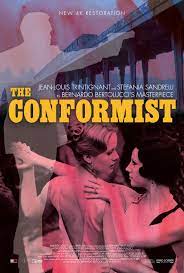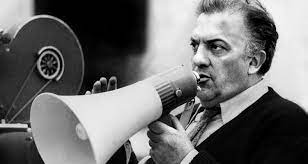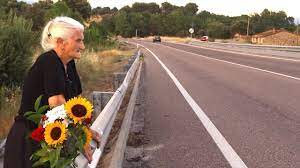
With over three decades of experience as a writer/author, a television producer, and a film director/producer, Mark Spano brings a wealth of expertise and personality to every speaking engagement.
Noted for compelling presentations on his feature-length documentary, “Sicily: Land of Love and Strife,” Mark’s presentations and classes on a host of topics related to films and filmmaking are not just informative but deeply engaging, leaving audiences enlightened and inspired. He infuses his talks with depth and insight gained through extensive teaching experience in creative writing and television production and through his profound knowledge of film, literature, Italian American issues, and Sicily’s rich, complex history.
Mark holds two advanced degrees. He has served as a visiting lecturer at East Carolina University, North Carolina State University, and Northern Virginia Community College. He has also organized and presented courses for continuing education at the Osher Lifelong Learning Institute at Duke University, the Continuing & Lifelong Learning Education program at North Carolina State University, and the University of North Carolina – Wilmington’s Graduate, Continuing, and Lifelong Education program.
For corporate events, educational seminars, and cultural gatherings, Mark’s presentations and/or courses on any of the following topics – which can be customized to suit the audience and time frame — will provide a memorable, enriching experience for your audience. (They’ll thank you later.)
If you’re interested, please look over the following list for a topic or class your audience will enjoy, then contact Mark Spano to discuss the details: mark@markspano.com.
1. The Plays of Anton Chekov on the Silver Screen

Course Description:
This course delves into the iconic plays and film adaptations of Russian playwriter and Master of modern short stories, Anton Chekhov (1860 – 1904). The class will explore how filmmakers have breathed life into Chekhov’s intricate characters and themes. Through film screenings, discussions, and analysis, we will gain a deep understanding of Chekhov’s works and their cinematic interpretations. And we will look at the life of Anton Chekhov — his work with the Moscow Art Theatre, with Konstantin Stanislavsky, and with his nephew Michael Chekov who developed what became known as “Method Acting.”
Brief Outline:
Classes 1, 3, 5, 7 & 9 – Screen Films
Classes 2,4,6,8 & 10 – Class discussion on the points set out in the takeaways.
Films:
- “The Seagull” 1975 version
- “The Cherry Orchard” 1981 version
- “Uncle Vanya” 1991 version
- “The Three Sisters” 2017 version
- “The Marriage Proposal” 2019 version
2. Three Women Feature Film Directors: Dorothy Arzner, Ida Lupino and Lina Wertmuller
Course Description:
When men dominated the movie industry, these three intrepid women fought for and found find their places in the Director’s Chair.
American filmmaker Dorothy Arzner was the only woman directing feature-length studio films in Hollywood during the 1930s.
British actress and naturalized American Ida Lupino appeared in 59 films, yet she is widely regarded as the most prominent woman filmmaker working in the 1950s during the Hollywood studio system.

Italian film director and screenwriter Lina Wertmuller is best known for her art house films in the 1970s. The class will discuss each of the women. We will also explore the differences – if any – between a film made by a woman and a film made by a man, and why this remains fascinating today.
Brief Outline:
Classes 1, 3, & 5 – Screen Films
Classes 2, 4 & 6 – Discussion around how these women became directors in an industry dominated by men and all the questions stated in the takeaways.
Films:
- “Dance, Girl, Dance” directed by Dorothy Arzner, 1940
- “High Sierra” directed by Ida Lupino, 1941
- “Seven Beauties” directed by Lina Wertmuller, 1976
3. Classic Italian Films

Course Description:
After World War II, Italy began to emerge from its devastation through what was called “The Italian Economic Miracle.” During that emergence, Italian films embraced Neorealism, “Spaghetti Westerns,” and art films. This class will spotlight three important directors during the era and discover how and why they did what they did and whether they were successful. We will also consider whether their types of films would be successful today.
Brief Outline:
Classes 1, 3, & 5 – Screen Films
Classes 2, 4, & 6 – Discussion of the points set out in the takeaways.
Films:
- “The Leopard,” 1963, directed by Luchino Visconti
- “A Few Dollars More,” 1965, directed by Sergio Leone
- “The Conformist,” 1970, directed by Bernardo Bertolucci
- “Roma,” 1972, directed by Federico Fellini
- “Mediterraneo,” 1991, directed by Gabriele Salvatores
4. Dorothy Arzner – Woman Director from Hollywood’s Golden Age

Course Description:
Dorothy Arzner was not the first woman film director. She was, however, the first woman in Hollywood to direct a prodigious list of feature films even though she was, in fact, a woman and a lesbian. Neither status was welcomed by the men who ran Hollywood at that time. This course will consider the risks she faced as she continued to pursue her career ambition and passion for filmmaking. As a woman and as a lesbian, did she bring something to filmmaking that her masculine counterpoints couldn’t? Or wouldn’t? What impact did she have on the future of filmmaking that we might recognize today?
Brief Outline:
Classes 1, 3, 5, 7 & 9 — Screen Films
Classes 2, 4, 6, 8 & 10 – Discussion on the points set out in the takeaway.
Films:
- “Merrily We Go to Hell,” 1932
- “Christopher Strong,” 1933
- “The Last of Mrs. Cheyney,” 1937
- “The Bride Wore Red,” 1937
- “Dance, Girl, Dance,” 1940
5. Post-war Italian Neorealism

Course Description:
Italian Neorealism was an unofficial film movement. No group or individual decreed this approach to filmmaking. It simply evolved. In this course, the class will learn that a film from the Neorealism era was characterized by stories set among the poor and working class. Many were shot on location in war-torn Italy. And many didn’t use professional actors. These films spoke of the difficult economic and moral conditions of post-World War II Italy. And as the class will come to understand, the darkness that seemed to shroud Italian cinema in despair demarcated a shift in the Italian mindset about an everyday life that included widespread poverty, oppression, and injustice. More contemporary Italian films continue to embrace that methodology.
Brief Outline:
Classes 1, 3 & 5 – Screen Films
Classes 2, 4 & 6 – Discussion of the points set out in the takeaways.
Films:
- “Open City,” 1945, by Roberto Rossellini
- “The Bicycle Thief,” 1948, by Vittorio De Sica
- “La Strada,” 1954, by Federico Fellini
- “Rocco and His Brothers,” 1960, by Luchino Visconti
- “Blow-up,” 1966, by Michelangelo Antonioni
- “The Sicilian Girl,” 2008, by Marco Amena
6. Ida Lupino – A Prolific Actress-turned-Director from the Late 1940s to the Late 1960s

Course Description:
Ida Lupino was a British-born actress, director, writer, and producer. Working primarily in the United States, she was the most prominent woman filmmaker in the 1950s when the studio system controlled the industry. In this course, the class will discern key accomplishments along Lupino’s career path, such as the socially conscious films she co-wrote and co-produced within her own independent production company, and that she was the first woman to direct a film noir. The class will also realize that this Renaissance woman wasn’t afraid to tackle real-life controversies on film, such as the fact that women were trapped by unfair social conventions throughout history. Ida Lupino was a true example of a proto-feminist filmmaker, and she left an enduring mark on her industry on both sides of the camera.
Brief Outline:
Classes 1, 3, 5, 7 & 9 – Screen Films
Classes 2, 4, 6, 8 & 10 – Discussion of the points set out in the takeaways.
Films:
- “Outrage,” 1950
- “Hard, Fast and Beautiful,” 1951
- “On Dangerous Ground,” 1951
- “The Bigamist,” 1953
- “The Trouble with Angels,” 1966
7. George Cukor: The Maker of Elegant Films

Course Description:
This course will introduce the class to an American film director of extraordinary elegance: George Cukor. He is best known for the high-quality and highly popular comedies and literary adaptations he directed during his 50-year career. He was also lauded for his ability to get strong, award-winning performances out of his actors, who adored him – including Katherine Hepburn. She made 11 movies with Cukor. (We will screen four of them.) We will discuss the question: In today’s cinematic world that’s dominated by Martin Scorsese, Quentin Tarantino, Baz Luhrmann, The Cohen Brothers, and Steven Spielberg, could Cukor’s slower-paced, more thoughtful kind of filmmaking find an audience? We will look closely at the differences between current filmmaking and George Cukor’s smart refinement.
Brief Outline:
Classes 1, 3, 5, 7 & 9 – Screen Films
Classes 2, 4, 6, 8 & 10 – Discussion of the points set out in the takeaways.
Films:
- “Camille,” 1936
- “Holiday,” 1938
- “The Philadelphia Story,” 1940
- “Adam’s Rib,” 1949
- “Born Yesterday,” 1950
8. “Sicily: Land of Love & Strife”

Course Description:
Written and directed by Mark Spano, this mesmerizing feature film takes viewers deep into the heart of one of the most historically renowned Mediterranean Islands – a crossroad throughout its history deemed the center of the world and the Spano family’s ancestral home. His methodology for this film — which feels like a visual love letter to Sicily — blends a transnational perspective of the island with a personal reverence for the Sicilian people themselves, and recognition of all that generations of Sicilians have had to endure. Brutal invasions by many other nations created one sort of strife. Negative stereotypes that paint all Sicilians as mafiosi (“The Godfather,” for example) created another. One of the reasons Mark made this film was to unveil and share with others the authentic Sicily – the land of love and strife.
Brief Outline:
Class 1 – Screen “Sicily: Land of Love & Strife”
Class 2 – Discussion of the points in the takeaways.
9. Billy Wilder: Making Great Films While Dodging the Censors

Course Description:
How do you define a well-made film? Does anyone still care about things like a beginning, middle, and end? Billy Wilder cared. The Austrian-born director, screenwriter, and six-time Academy Award winner applied the contraption of plot to each of his films. During the early years of his 50-year career in Hollywood, Wilder was confronted with Joe Breen’s Production Code Administration and The National Catholic Legion of Decency. Both demanded script approval and film cuts based on their notions of public decency. Those were tough waters, but Billy Wilder navigated them brilliantly. As s result, his films were made the way he wanted and most of them remain much-loved today. In this class, we’ll watch Wilder films and then discuss what makes them genius.
Brief Outline:
Classes 1, 3, 5, 7 & 9 – Screen Films
Classes 2, 4, 6, 8 & 10 – Discussion of the points set out in the takeaways.
Films:
- “Sunset Boulevard,” 1950
- “Witness for the Prosecution,” 1957
- “Seven-Year Itch.” 1957
- “Some Like It Hot,” 1959
- “The Apartment,” 1960
10. Tennessee Williams’ Iconic Plays on Television

Course Description:
One of the greatest playwrights of the 20th century gave us a long list of masterworks for the stage. Many a film director has tried to take the works of this master of Southern drama to the silver screen and, later, the television screen, some with enormous success – “A Streetcar Named Desire,” for one glowing example – some with utter failure to capture the emotional complexity of Williams’ characters and the lovely poetry of his words. How do you bridge the chasm between the oration of stage work and the visual art of film? We will consider this question – but not by screening the classic film adaptations. They’re too familiar to most of us. Instead, we will break new ground with these scripts by screening alternative versions.
Brief Outline:
Classes 1, 3, 5, 7, & 9 – Screen Films
Classes 2, 4, 6, 8, & 10 — Class discussion on the points set out in the takeaways.
Films:
· “The Glass Menagerie,” 1973 (Katherine Hepburn, Sam Waterston)
· “Suddenly Last Summer,” 1993 (Maggie Smith, Rob Lowe)
· “Cat on a Hot Tin Roof,” 1984 (Tommy Lee Jones, Jessica Lang)
· “The Roman Spring of Mrs. Stone,” 2002 (Helen Mirren version)
11. Detective Films After 1950

Course Description:
After 1950, Hollywood crime films changed greatly. We will follow a discussion about the world of detective films post-1950 in what was becoming a more inclusive and diverse world. We will investigate contributions from women directors, writers, African Americans, and members of the LGBT community. We will see some unique approaches to perspective and storytelling as they reshape and redefine the traditional detective narrative. We will attempt to gain a comprehensive understanding of how the detective genre serves as a canvas for exploring a myriad of perspectives and narratives in American life.
Brief Outline:
Classes 1, 3, 5, 7, & 9 – Screen Films
Classes 2, 4, 6, 8, & 10 – Class discussion on the points set out in the takeaways.
Films:
- “In a Lonely Place,” 1950 / Novel by Dorothy B. Hughes, 1947
- “Strangers on a Train,” 1951 / Novel by Patricia Highsmith, 1976
- “L.A. Confidential, 1997 / Novel by James Ellroy, 1990
- “The Talented Mr. Ripley,” 1999 / Novel by Patricia Highsmith, 1955
- “The Girl with the Dragon Tattoo,” 2011 / Novel by Stieg Larson, 2005
12. Literature to Film: Gains & Losses

Course Description:
Through screenings and discussions, participants will gain insights into the creative choices filmmakers make when adapting classic texts and examine how the visual medium enhances or alters the essence of the original literary works. We will immerse ourselves in the intersection of literature and film, exploring the transformative power of storytelling across different artistic media.
Brief Outline:
Classes 1, 3, 5, 7, & 9 – Screen Films
Classes 2, 4, 6, 8, & 10 – Class discussion on the points set out in the takeaways.
Films:
- “The French Lieutenant’s Woman,” 1981, Karel Reisz / Novel by John Fowles
- “Anna Karenina,” 1935, Clarence Brown / Novel by Leo Tolstoy
- “Swann’s Way,” 1984, Volker Schlondorff / Novel by Marcel Proust
- “David Copperfield,” 1935, Albert Lewin / Novel by Charles Dickens
13. Busby Berkeley: Director, Choreographer, and Deliverer from the Great Depression

Course Description:
Director and choreographer Busby Berkeley is remembered for the elaborate dancing-girl Hollywood extravaganzas. He was an innovator as audiences witnessed in his revolutionary choreography and filming techniques. He completely reinvented the Hollywood musical. While he was on contract with Warner Brothers during the Great Depression, he created on the screen a world of fantasy, romance, and music – just the bromide for Americans living day to day with very little good news.
Brief Outline:
Classes 1, 3, 5, 7, & 9 – Screen Films for which Berkeley served as director or choreographer.
Classes 2, 4, 6, 8, & 10 – Class discussion on the points set out in the takeaways.
Films:
- “42nd Street,” 1933 – Choreographer
- “Gold Diggers of 1935,” 1935 – Director
- “Strike Up the Band,” 1940 – Director
- “Babes on Broadway,” 1941 – Director
- “The Gang’s All Here,” 1943 – Director
14. Why Was Federico Fellini a Great Filmmaker?

Course Description:
No study of cinema can be complete without considering the works of legendary Italian filmmaker Federico Fellini Cavaliere di Gran Croce OMRI (1920 – 1993). Fellini is still considered one of the most intelligent and influential filmmakers of all time. Through a few of his films, we will observe and discuss Fellini’s distinct visual style, innovative storytelling techniques, and unique blend of surrealism and realty, all of which set him apart from all the rest. Fellini had a remarkable ability to delve into the complexities of the human condition, capturing emotions and experiences in a way that felt both profound and deeply relatable. His work often challenged conventional narrative structures, offering viewers a new perspective on storytelling. We will discover how his many collaborations with talented cinematographers, composers, and actors helped create visually stunning, emotionally profound films that resonated with audiences worldwide and continue to today.
Brief Outline:
Classes 1, 3, 5, 7, & 9 – Screen Films
Classes 2, 4, 6, 8, & 10 – Class discussion on the points set out in the takeaways.
Films:
- “La Strada,” 1954
- “Nights of Cabiria,” 1957
- “La Dolce Vita,” 1960
- “8-1/2,” 1963
- “Armarcord,” 1973
15. Five Important Feature-length Documentaries

Course Description:
In this course, we will explore the essential elements of compelling documentary filmmaking by analyzing five culturally significant examples. We will examine the success of each film based on compelling subject matter, authenticity, storytelling, emotional resonance, and audience impact. And we will come to recognize and understand the factors that contribute to the effectiveness of these brilliant documentaries.
Brief Outline:
Classes 1, 3, 5, 7, & 9 – Screen Films
Classes 2, 4, 6, 8, & 10 – Class discussion on the points set out in the takeaways.
Films:
- “To Be and To Have,” 2002, by Nicolas Philibert
- “Genius Within: The Inner Life of Glenn Gould,” 2009, by Michele Hozer and Peter Raymont
- “My Name is Salt,” 2013, by Farida Pacha
- “I Am Not Your Negro,” 2016, by Raoul Peck
- “The Silence of Others,” 2018, by Almudena Carracedo and Robert Bahar
END
